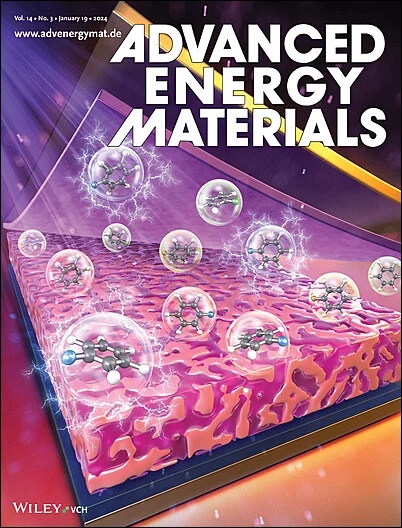High‐Valence Metal‐Photoelectrocatalytic Biomass Conversion to Aldehyde on Integrated Photoelectrodes
IF 26
1区 材料科学
Q1 CHEMISTRY, PHYSICAL
引用次数: 0
Abstract
Photoelectrochemical (PEC) biomass conversion represents an attractive strategy for the sustainable conversion of low‐value biomass into value‐added chemicals. Nonetheless, sluggish charge transfer kinetics and insufficient density of catalytic active sites critically impede PEC performance, constraining conversion efficiency and product selectivity. Herein, photoelectrocatalytic biomass oxidation of glycerol to C3 products on the integrated Au‐Ni集成光电极上高价金属光电催化生物质转化为醛
光电化学(PEC)生物质转化是将低价值生物质可持续转化为增值化学品的一种有吸引力的策略。然而,缓慢的电荷转移动力学和催化活性位点密度不足严重阻碍了PEC的性能,限制了转化效率和产物选择性。本文报道了在Au‐Ni2P/ZnO/WO3集成光阳极上催化生物质氧化甘油生成C3产物,法拉第效率达到82.9%。从带隙结构和时间分辨光致发光光谱分析来看,ZnO/WO3异质结构由于形成内置电场而显著加速了电荷转移和分离。特别是,表面重建诱导了高价镍作为活性中心的产生,促进了质子耦合电子转移(PCET)过程,加快了表面反应动力学。结合原位红外光谱和电子顺磁共振光谱的机理研究,阐明了反应途径和中间演化过程。这项工作提出了一个合理的集成光阳极设计范例,并提供了一个有前途的高价金属光电催化策略,促进了高效的生物质到化学的转化。
本文章由计算机程序翻译,如有差异,请以英文原文为准。
求助全文
约1分钟内获得全文
求助全文
来源期刊

Advanced Energy Materials
CHEMISTRY, PHYSICAL-ENERGY & FUELS
CiteScore
41.90
自引率
4.00%
发文量
889
审稿时长
1.4 months
期刊介绍:
Established in 2011, Advanced Energy Materials is an international, interdisciplinary, English-language journal that focuses on materials used in energy harvesting, conversion, and storage. It is regarded as a top-quality journal alongside Advanced Materials, Advanced Functional Materials, and Small.
With a 2022 Impact Factor of 27.8, Advanced Energy Materials is considered a prime source for the best energy-related research. The journal covers a wide range of topics in energy-related research, including organic and inorganic photovoltaics, batteries and supercapacitors, fuel cells, hydrogen generation and storage, thermoelectrics, water splitting and photocatalysis, solar fuels and thermosolar power, magnetocalorics, and piezoelectronics.
The readership of Advanced Energy Materials includes materials scientists, chemists, physicists, and engineers in both academia and industry. The journal is indexed in various databases and collections, such as Advanced Technologies & Aerospace Database, FIZ Karlsruhe, INSPEC (IET), Science Citation Index Expanded, Technology Collection, and Web of Science, among others.
 求助内容:
求助内容: 应助结果提醒方式:
应助结果提醒方式:


